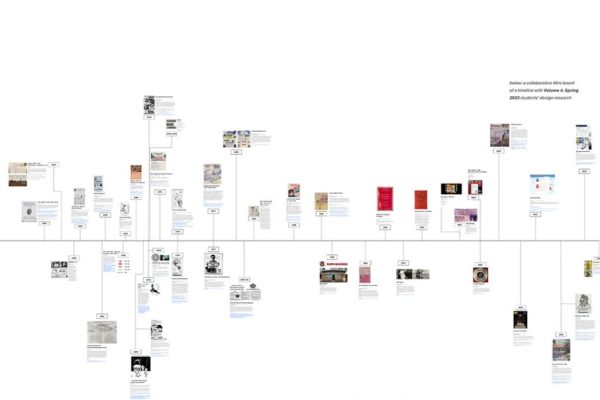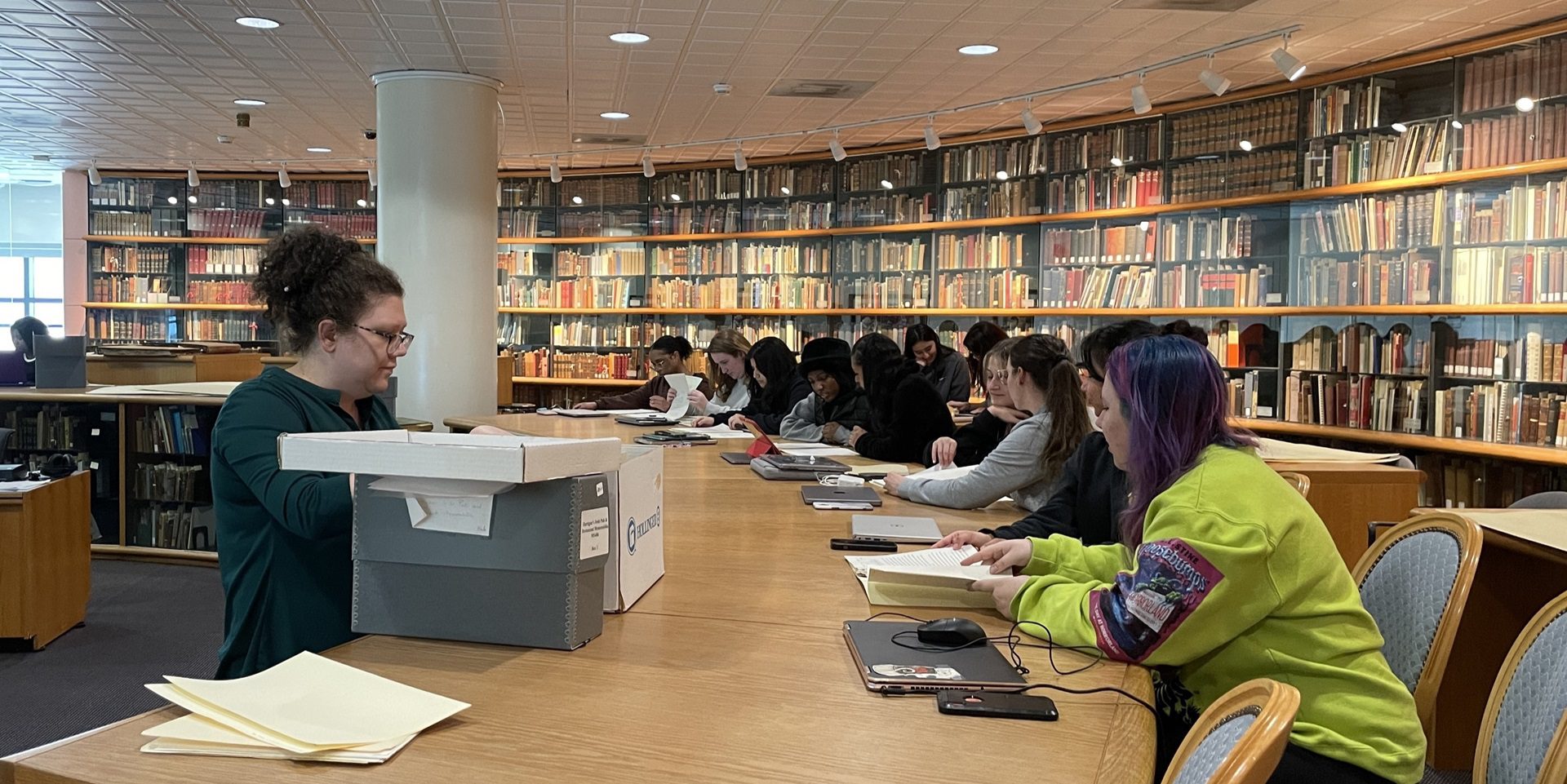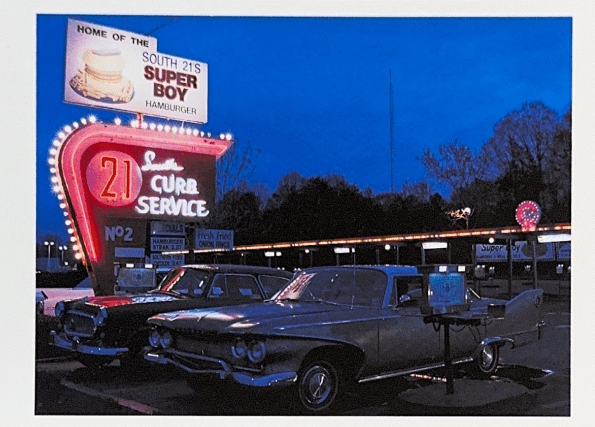Design Research Class Collects Local Design History

As they complete their spring semester, students in Christina Singer’s Design Research class have published what will be the sixth digital book to emerge from the Department of Art & Art History’s graphic design program since Singer joined the department in 2021. CLT Graphic Design History: A Collective Research Effort, Vol. 6 is a delightful presentation of logos, postcards, ads, and more that Singer’s 18 students have collected and analyzed – visual artifacts of our city’s culture.
Discovered in the archives at Atkins Library, on current and historic websites, and even along Charlotte’s busy corridors, the graphic materials chosen by the students have also been added to the People’s Graphic Design Archive (PGDA), an international crowd-sourced virtual repository for design materials that launched in 2020. Since she began teaching at UNC Charlotte, Singer’s students have contributed nearly 200 design artifacts and descriptions to the PGDA.
“The PGDA was founded by graphic design professors and historians to democratize design history,” Singer said. “There’s a need for expanding the canon, for asking what is the canon of design history?”
In preparation to choose their three local artifacts, students did a variety of exercises, learning to “interrogate an artifact,” Singer said, and visited Special Collections at Atkins Library for sessions with an archivist.

Like many of the students, senior graphic design major Hannah Alvarado chose items that had a personal connection. As a four-year-old, Alvarado attended the Charlotte Bilingual Preschool, so she decided to do a comparative study of the school’s original and current logos.
“The first logo used very traditional imagery,” she said. “A red school, children focused.” The new branding, she pointed out, has a mosaic pattern like Latin American tiles, and in its abstraction has a broader connotation, reflecting an expansion of the organization’s mission.

Likewise, a postcard image of the 21 South drive-in restaurant on Independence Boulevard – found in a box of old postcards in Atkins Library – caught her attention because of its familiarity. The restaurant, established in 1959 and photographed by Diane Davis 30 years later, is still in operation.
“I would pass by it frequently and I would never stop.” (After doing her research, Alvarado visited 21 South and tried the onion rings. “They were really good,” she said).

Takenvia Jones said she made choices based on “what I wanted to represent” – work by a Black designer, something related to UNC Charlotte, and “something fun.” Her first two artifacts were from newspapers: The Charlotte Post, an African American newspaper founded in 1878, and the Charlotte Observer.
“As a Black designer, I really wanted to provide representation for myself and others. I think it is important to know design history especially as it pertains to identity because for me, I had not really seen Black graphic designers represented in Charlotte.”
The material from the Charlotte Observer, a special souvenir pullout section, documented the UNC Charlotte basketball team’s journey to the finals of the National Invitational Tournament in 1976.
“I chose this because it had a connection to the school, but it also gave me an opportunity to speak on the design of the paper as a whole and speak a little on the history of the school mascot, which I found very interesting,” Jones said.

Alvarado said the class “has changed the way I view graphic design. I’ve learned a lot more about the diverse perspectives of graphic design.”
She and Jones have both been impressed, they said, by the breadth of what constitutes design and its prevalence in society.
“Looking at everything that has been documented in the People’s Graphic Design Archive and what my peers have included in the book, graphic design can be anything from a postcard, to a playbill, or a sign to a restaurant, but it can also be a lot more,” said Jones. “Graphic design is seen everywhere and is interconnected with our everyday lives.”
For that very reason, said Singer, designers have a responsibility to be thoughtful about their work.
“We as designers have the privilege of creating culture through what we design.”
Singer publicly presented findings from her teaching of the Design Research course at Design Incubation Colloquium 10.2: Annual CAA Conference 2024 on February 15, 2024. Access that presentation here.